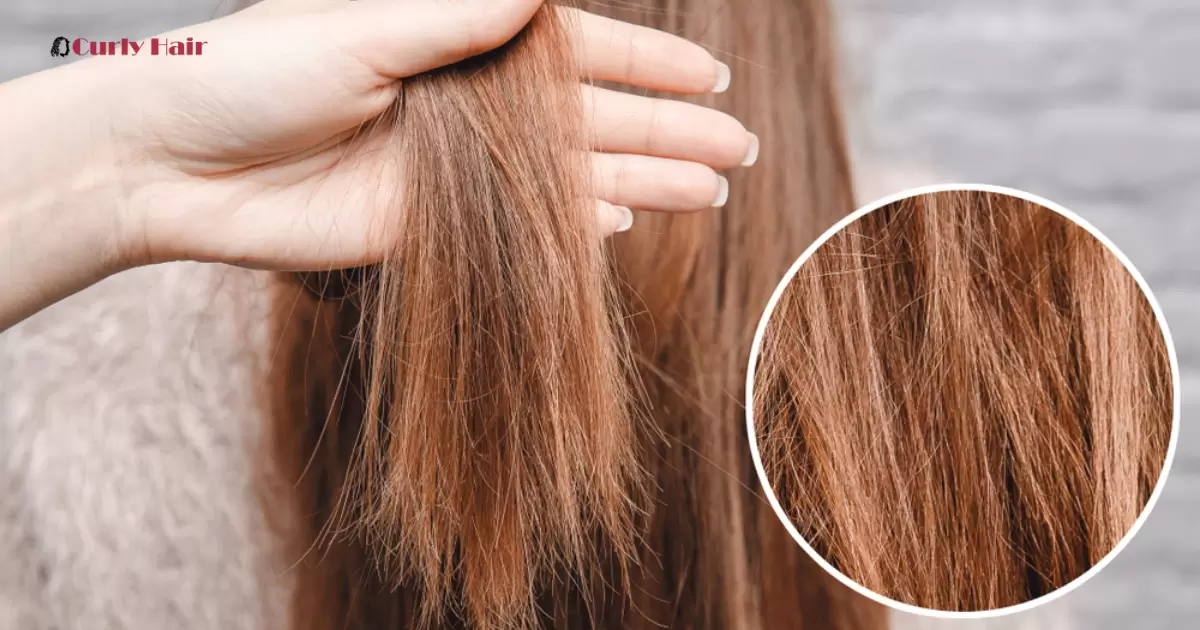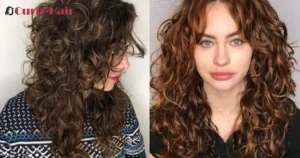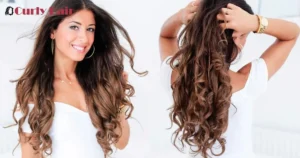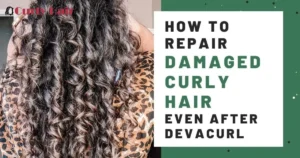Damaged straight hair can be challenging to manage, but with the right care and home remedies, damaged straight hair can regain its health and shine. This guide will walk you through understanding hair damage, the science behind repair, and a detailed hair care routine to help you achieve healthy hair. We’ll also cover advanced tips to prevent future damage.
Key Takeaways
- Common signs include dryness, frizz, and breakage. Understanding the extent of damage helps in choosing the right treatments.
- Excessive use of heat-styling tools can worsen the damage. Always use a heat protectant and limit styling frequency.
- Natural treatments like coconut oil, olive oil, and apple cider vinegar can restore moisture and repair damage.
- Use gentle, sulfate-free shampoos and conditioners designed for damaged hair. Avoid overwashing and harsh treatments.
Understanding Damaged Straight Hair
Straight hair, while often seen as low-maintenance, is not immune to damage. Common signs include dry damaged hair, frizzy hair, and breakage. These issues can arise from various factors, including heat damage, environmental exposure, and improper hair care routines.
Dry Damaged Hair and Frizz Signs of Distress
When your hair becomes dry and frizzy, it’s a clear sign that it’s struggling. Straight Hair Turning Wavy can be a result of moisture imbalance, leading to brittle strands that are prone to breaking. Frizz, on the other hand, happens when the hair shaft is damaged, causing the cuticles to lift and making your hair look rough and unruly.
How Heat Damage Contributes to Hair Problems
Heat styling tools like flat irons and curling wands are popular for achieving sleek, straight hair. However, excessive use can lead to severe damage. Heat weakens the hair’s protein structure, causing split ends and breakage. Over time, this can result in significant hair damage, making your straight hair look dull and lifeless.
The Science Behind Hair Damage and Repair

To effectively repair damaged straight hair, it’s essential to understand how hair works and what causes damage.
The Hair Shaft and Its Vulnerabilities
The hair shaft is the visible part of the hair, composed of three layers: the cuticle, cortex, and medulla. The cuticle is the outermost layer, acting as a protective shield. When the cuticle is damaged, the inner layers become exposed, leading to weakened hair that’s more prone to breakage.
How Home Remedies Penetrate the Hair
Home remedies work by penetrating the hair shaft to nourish and repair it from the inside out. For instance, natural oils like coconut oil and olive oil are rich in fatty acids that can deeply moisturize and strengthen the hair. These oils can easily penetrate the hair shaft, filling in gaps and smoothing the cuticle, which helps reduce frizz and improve the overall texture of your hair.
The Importance of Hair’s pH Balance
Maintaining the correct pH balance is crucial for healthy hair. Your hair’s pH level should ideally be between 4.5 and 5.5, which is slightly acidic. This acidity helps keep the cuticles closed and the hair shaft smooth. Home remedies like apple cider vinegar can help restore your hair’s pH balance, bringing back its natural shine and softness.
Promoting Hair Growth Through Proper Care
Damaged hair often struggles with growth. By focusing on repairing and nourishing the hair shaft, you can encourage healthier, faster hair growth. Natural oils and other home remedies can provide the essential nutrients needed to strengthen the hair and support its growth cycle.
Essential Home Remedies for Damaged Straight Hair
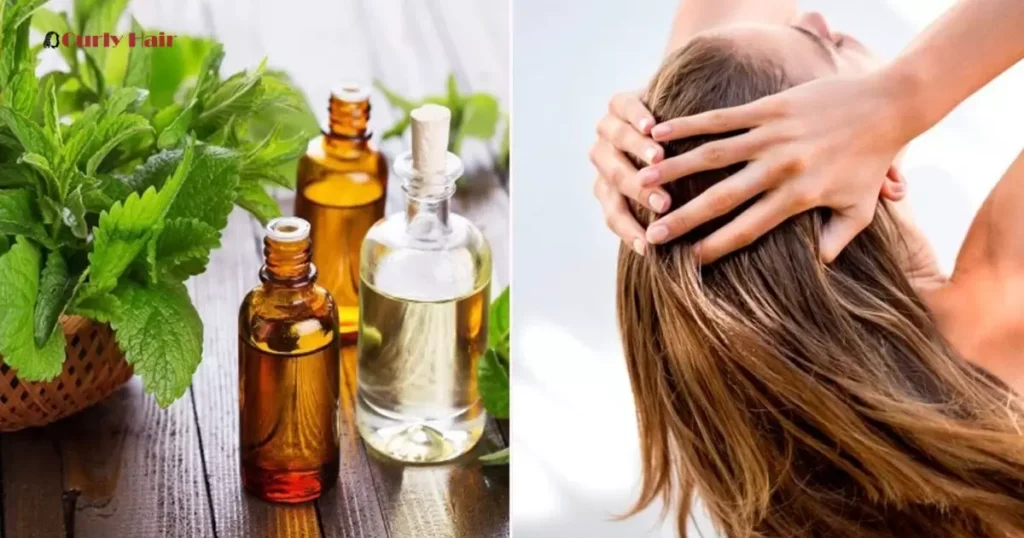
Now that we’ve covered the basics, let’s dive into some effective home remedies that can help repair damaged straight hair.
Natural Oils – Coconut Oil and Olive Oil
Natural oils are your hair’s best friend when it comes to repairing damage. Coconut oil is particularly beneficial due to its ability to penetrate the hair shaft and provide deep conditioning. It helps reduce protein loss and strengthens your hair from the inside out.
To use coconut oil, warm a small amount in your hands and apply it to your hair, focusing on the ends. Leave it on for at least 30 minutes, or overnight for a more intensive treatment, then wash it out with a gentle shampoo.
Olive oil is another excellent option, rich in antioxidants and vitamin E. It helps moisturize the hair and seal the cuticle, preventing further damage. Use it in the same way as coconut oil for best results.
Apple Cider Vinegar – Restoring pH and Shine
Apple cider vinegar is a fantastic natural remedy for restoring your hair’s pH balance. It helps smooth the cuticle, making your hair appear shinier and healthier. Mix one part apple cider vinegar with two parts water and use it as a final rinse after shampooing. The vinegar will help close the cuticle and lock in moisture, giving your hair a glossy finish.
Hair Masks for DIY Nourishment
Creating your hair masks at home is an effective way to deliver intensive nourishment to your hair. Here’s a simple recipe:
Ingredients:
- 2 tablespoons of coconut oil
- 1 tablespoon of olive oil
- 1 egg yolk
- 1 tablespoon of honey
Instructions:
- Mix all the ingredients until well combined.
- Apply the mixture to your hair, focusing on the damaged areas.
- Cover your hair with a shower cap and leave the mask on for 30-60 minutes.
- Rinse thoroughly with lukewarm water and shampoo as usual.
- This hair mask provides deep conditioning, strengthens the hair shaft, and helps repair damage.
Step-by-Step Hair Care Routine
Consistency is key to repairing damaged hair. Here’s a step-by-step routine to follow:
Washing Your Hair – Shampoo and Condition
Start by choosing a gentle, sulfate-free shampoo that won’t strip your hair of its natural oils. Wash your hair no more than three times a week to avoid over-drying. Follow up with a conditioner that’s designed for damaged hair, focusing on the mid-lengths and ends.
Leave-In Conditioner for Locking in Moisture
After washing, apply a leave-in conditioner to your damp hair. This will help lock in moisture and protect your hair from further damage. Choose a leave-in conditioner that contains natural oils or proteins to nourish your hair throughout the day.
How Your Hair Should Feel When Achieving Healthy Hair
With regular care, your hair should start to feel softer, smoother, and less frizzy. The goal is to achieve healthy hair that’s resilient to damage and easy to manage. Pay attention to how your hair feels after each treatment; it should feel hydrated and strong, not greasy or weighed down.
Advanced Tips for Preventing Future Hair Damage

Once you’ve started repairing your hair, it’s important to prevent future damage.
Avoiding Heat Damage and Protecting Your Hair
Limit the use of heat-styling tools like straighteners and curling irons. When you do use them, always apply a heat protectant spray to shield your hair from high temperatures. Consider air-drying your hair whenever possible to minimize heat exposure.
Weekly Hair Masks for Ongoing Care
Incorporate a weekly hair mask into your routine to keep your hair nourished and strong. These masks provide a boost of moisture and nutrients, helping to maintain the health of your hair.
Supporting Hair Growth with Long-Term Strategies
To support long-term hair growth, focus on a balanced diet rich in vitamins and minerals. Foods like nuts, seeds, and leafy greens are great for promoting healthy hair growth. Additionally, regular scalp massages with natural oils can stimulate blood flow and encourage hair growth.
Frequently Asked Question
Can very damaged hair be repaired?
Yes, very damaged hair can be repaired with the right treatments. Using moisturizing hair masks, and natural oils, and avoiding heat damage can restore its health and shine.
How to fix damaged hair without cutting it?
To fix damaged hair without cutting it, use nourishing hair masks and deep conditioning treatments regularly. Avoid heat styling and protect your hair with natural oils and leave-in conditioners.
Can I straighten my damaged hair?
It’s best to avoid straightening damaged hair, as heat can worsen the damage. Focus on repairing and nourishing your hair before using heat styling tools.
Conclusion
Achieving healthy hair is a continuous process that requires dedication and the right care. By following this guide and incorporating these home remedies into your routine, you can repair your damaged straight hair and keep it looking its best. Remember, consistency is key, over time, you’ll notice a significant improvement in your hair’s health, texture, and shine.
By integrating these steps into your hair care routine, you’ll not only repair damage but also lay the foundation for stronger, healthier hair in the future.
